I've said it before and I'll say it again, there's truly nothing I love more than helping people catch fish. While I still love catching fish myself, as the years have gone by I've come to realize I love seeing/helping other people catch fish just as much (and some days more) than having one on the end of my own line. Seeing that look on a customer's face when they 'do it all on their own' for the first time (i.e. make the cast, make the mend, set the hook (without my instruction), fight and land the fish) is something I live to see over and over again. I love those moments because of their purity and how, at that moment in time, there is literally nothing else happening in the world. Thoughts of job or money stress, chores needing done at home, upcoming business trips, family obligations...they all seem to disappear when that fish is in the net. In the grand scheme of things it's definitely a little funny to think about. Why does a little 12" trout bouncing around on the end of your fly line suddenly make all the world's problems go away for that brief moment in time? I don't personally know the answer to this, but I challenge anyone to prove to me it doesn't.
If you've paid attention to any of my recent weekend Colorado fishing reports, you'll notice two things - 1) We've been spending a lot of time on the South Platte and 2) We've been catching a lot of fish. Yet, I still talk to customers frequently who say they haven't been having much luck. So with that in mind, here is the exact playbook of my keys to success over these past 6 or 8 weeks. The patterns and tactics described below should continue to produce through March as well. Once spring really arrives, a few adjustments might need to be made, however you can rest assured I'll keep you all informed.
Flies- This seems like the most logical place to start and is something (I personally feel) people spend a little too much time thinking about. I've rarely had a day on the South Platte where I found myself needing to make more than 2 fly adjustments to catch enough fish to keep me satisfied. So.....here is EXACTLY what all those fish you see in the recent reports have been eating.
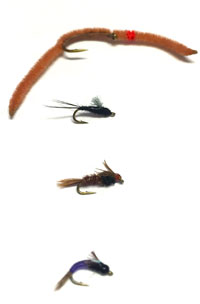 Brown San Juan Worm- size 12 or 14 (wine and red worms have both been working great as well, however the last two trips brown has been the deal)
Brown San Juan Worm- size 12 or 14 (wine and red worms have both been working great as well, however the last two trips brown has been the deal)
Black rs2- size 20
Non Bead/Non Flash Pheasant Tail- size 20 or 22
Jujubaetis- purple size 20
That's it! Small and dark has been the key for me lately. Last year the fish really seemed to have their eye on red, however this hasn't been nearly as consistent of a producer for me this Spring. Don't really know why, and don't really care. Small and dark has been catching fish and that's the whole reason we're out there standing in a cold river.
Rigging- This stays consistent for me year round, and in my opinion, is especially important from late fall through spring. Make a fist and hold it up in front of you. Now extend your thumb and pinky in a stretched out fashion. This spacing (from tip of thumb to tip of pinky) is what you need to focus on for A) split shot to first fly, and B) first fly to second fly. If you've never fished your flies this close, it's probably going to freak you out a little at first. However, just trust me on this. The fish are sluggish right now and aren't going to chase your flies down. Keeping things nice and tight will let you work the water more efficiently, as well as allow you to give the fish options at both (or all three) of your flies. Here's another way to think of it. If your flies are 15"-18" apart (as I frequently see people doing) and the top fly doesn't look appealing, but perhaps the bottom one does, don't plan on a fish moving that 15" or 18" this time of year to grab it. All stretches of the South Platte support an immense number of fish per mile. What this means, is that there is a TON of food in the water to support them all. South Platte trout don't have to chase a meal down -particularly this time of year- because they know 100 more meals (and ones without hooks) are on their way down to them. Keep your flies close together and your catch rates will go up.
Leader/Tippet- 5x is what I fish day in and day out on the South Platte. Typically I try to be in the 9-11' range between fly line to first fly...and as we all now know, my 2nd fly will be dangling 8 or so inches behind that. I fish both Rio and Trouthunter tippet and find success with both. Trouthunter is now making a 5.5x tippet which I have experimented with a little in Cheesman Canyon and have had no issues. I avoid 6x tippet at all cost...and for the past 20 years have been very successful at it.
Indicator- Yarn, Yarn and more Yarn. Landon Mayer gave a presentation the other night at the shop where he stressed the importance of using a clear thingamabobber for technical trout. I picked up a few of these and used them for a while last weekend at Deckers. While I caught fish on them, and was able to see them better than I had anticipated, I still found myself switching back to yarn. I haven't cancelled out implementing clear thingamabobbers in certain situations and will continue to experiment with them, but one thing I'll never be talked out of is the superior sensitvity and delicacy in presentation that yarn provides. If you've never fished yarn indicators, pick some up and give it a go. I think you'll like what you see.
Weight- This again is a year round rule- if you're not ticking the bottom every few drifts, add more weight. Additionally, watch the bubbles on the surface. If they're floating the same speed as your indicator, add more weight. The fish are tight to the bottom and you need to get your flies right in their face. I always start with a decent size split shot, and then mold mojo mud tungsten putty over the top of it to dial in the specific weight required for each spot I'm fishing.
Sunglasses- Costa Del Mar Blackfin 580G, copper lens. This is another year round staple for me and has been instrumental in spotting fish on both the sunny and cloudy days. The latter of which seems to be a constant companion lately. Good glasses are key.
Reading Water- Lastly, we get to the all important topic of Reading Water. I would say if during the last few trips to Deckers/Dream Stream we have caught 60 or 70 fish.....95% of those were sight fished- meaning we were looking at, and casting to, the fish we ended up catching. Just like learning to cast is a skill you accept must be learned when beginning to fly fish, learning to see fish in the water is another skill that must also be accepted as 'need to learn' and as such, takes practice. There are a few keys to this in my opinion- 1) Patience! Don't "look" for 2 minutes and then go back to fishing a riffle. Really commit to looking for fish. I always encourage people to hit the river on a sunny day and use ALL self control they posess to not make a cast unless it is TO a fish. Like is said about a lot of things in life, the first time is the hardest. Once you spot that first fish, I promise you the 2nd one will be easier, and the 3rd easier than that. Extrapolate that to the two-hundreth fish you spot and you're hopefully starting to get my drift. It'll just get easier and easier I promise.
Below I've included some photos with arrows pointing to zones you should focus on when sighting fish, as well as a few photos of fish in the water. It constantly amazes people on my guide trips, just how shallow South Platte fish (especially Deckers/Cheesman) will get, as well as how close you can get to them. Don't look in 5' deep water. Search out the 12-24" zones next to deep water where you can clearly see all the way to the bottom. Also, don't look for a "fish". Look for 10-12" sections of greens/blues/reds. The green/blue will be the color a fishes back/tail usually appears in the water. The red will be the red stripe on the side of a rainbow trout. Lastly, looking for white flashes can also pay off. You'll see this when a fish is actively feeding and the "white" will be the inside of its mouth. Side to side "movement" is also a big indicator you've just found a fish. The river is running in the same, continual direction- downstream. Anything out of the ordinary (i.e. side to side movement) should be considered a possible fish and should be studied. This will oftentimes turn into a clump of grass/weeds swaying back and forth in the current....however not all the time.
Notice I said 95%, and not 100% of the fish we've caught have been sight fished. This must mean a few were caught by blind fishing to "fishy" looking water. The areas we've found most productive for this type of fishing have been shin to thigh deep water that is moving at or around "walking speed".....having a few boulders or rocks around to break the current/funnel food doesn't hurt anything either. Don't waste your time right now fishing the real fast, shallow stuff. Also, while there are some fish to be caught by using a bunch of weight and dredging a 5 or 6 foot deep wintering hole, this will not be your most consistent producer. Wait until spring/summer for these last two spots to become more productive. A last point to make for blind fishing this time of year is to SET THE HOOK. The fish in the South Platte will rarely attack your fly resulting in a full on dunking of your indicator, particularly this time of year. You should be setting the hook any time your indicator does anything but float along naturally. Any pause, twitch or hesitation should be considered a strike and the hook set.
Hopefully this recap of keys to my late winter/early spring success has been helpful. If you'd like me to expand/clarify on any of the above mentioned topics, please don't hesitate to reach out! I can't stress it enough, I'm always happy to help.
Still want to learn more? Booking a Guided Trip is without a doubt the easiest way to speed up the learning curve. While I realize the upfront investment in booking a guided trip could be considered significant, the argument could also be made that it's still cheaper in the long run. What I mean by that is, think of all the money (and time) you'll spend over the course of several months/years, heading to the river to figure out on your own what could be learned in a single day with one of our professional fly fishing guides. Our guiding season is beginning to kick off and the first few trips of the 2015 season will be heading out the door these next few weekends!
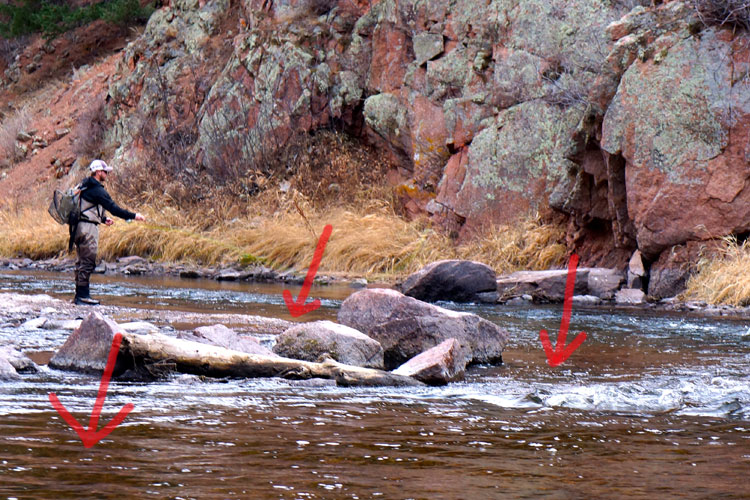
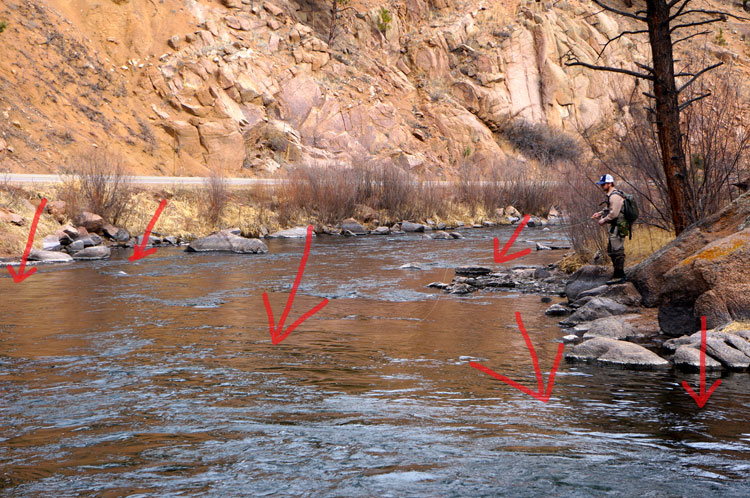
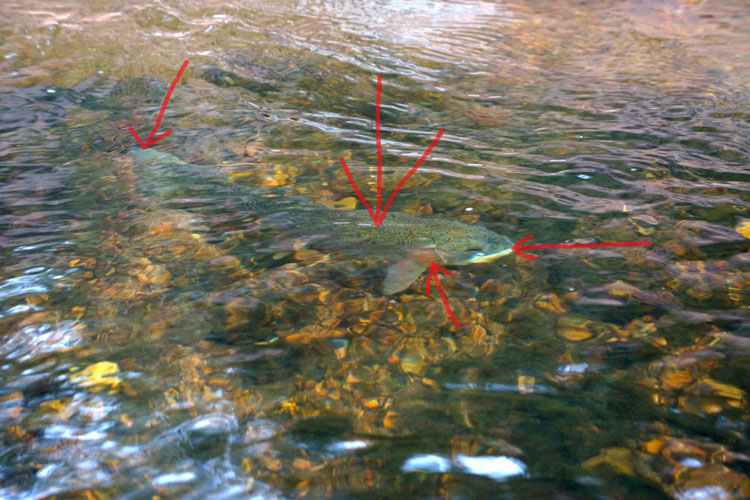
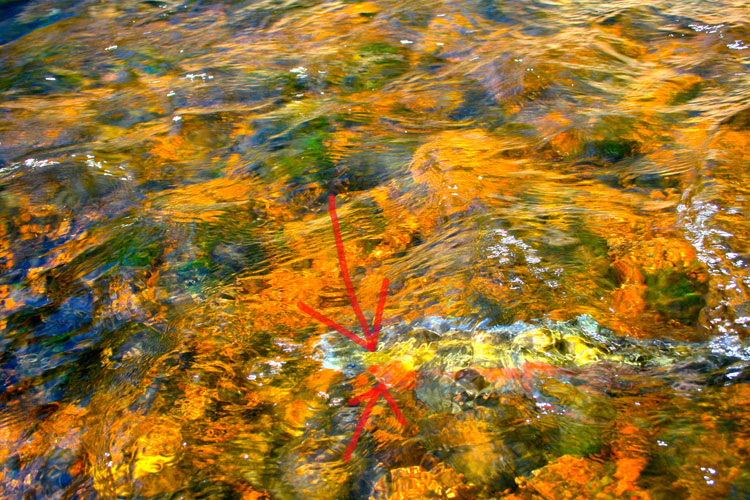


 Brown San Juan Worm- size 12 or 14 (wine and red worms have both been working great as well, however the last two trips brown has been the deal)
Brown San Juan Worm- size 12 or 14 (wine and red worms have both been working great as well, however the last two trips brown has been the deal)


